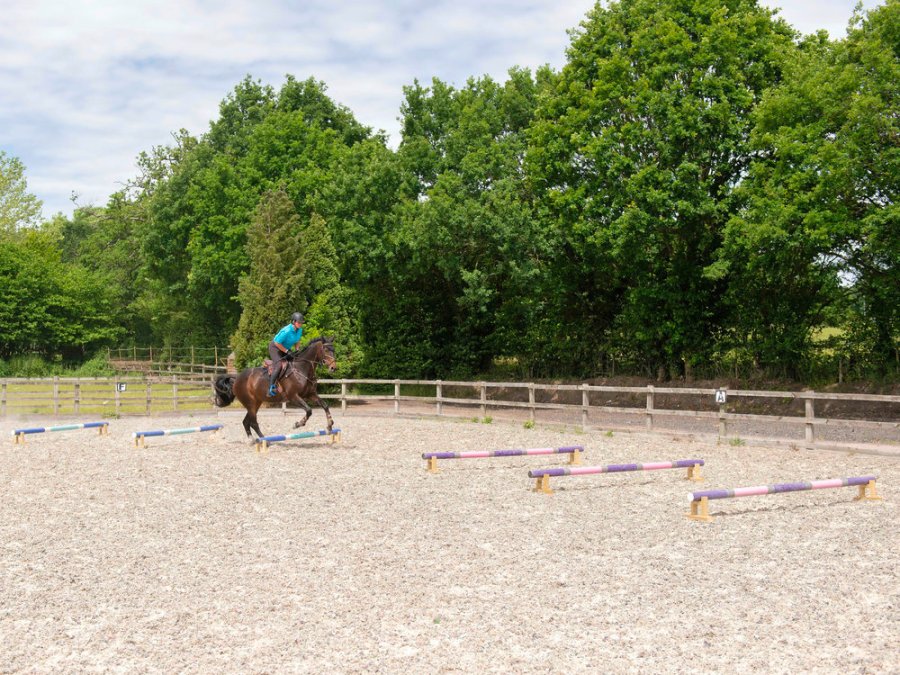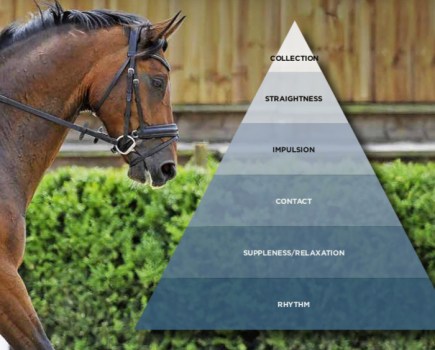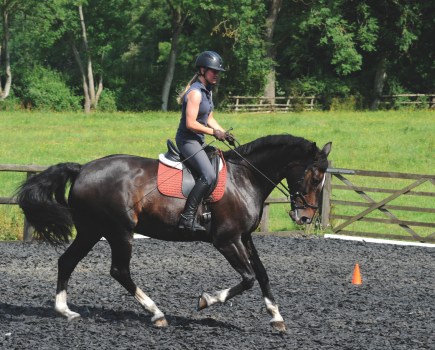Tricky gymnastic patterns demand precision – but if you’re riding a horse who’s keen or strong it can feel like a bit of a battle. Ros Canter shares a grid to practice at home, so you ooze confidence at competition.
For this exercise set up nine poles raised off the ground, three on a curve, three on the straight and the last three on another curve. Begin in trot, then move on to canter.
The key to riding any grid is a regular rhythm. If the canter becomes faster or slower, it affects the distances between fences. If your horse becomes keen, ask him to halt after clearing the last pole.
“Putting a halt in makes it clear that this isn’t a fighting exercise – you’re not going to pull on the reins through the grid – but the horse has to ask you what to do next, rather than assume he can bomb around the corner,” says Ros.
This is important, because if you’re presented with a skinny on a turn, you need to remain in control after the previous fence, with your horse listening.
“I still want to be on a longer rein, but the temptation is to shorten and gather them up, which sets a horse up to be stronger.”
Taking a break from the exercise is a useful tactic too. Canter a circle and ask your horse to shorten his stride, or ride some canter-trot-canter transitions. If your horse is still buzzy, halt instead.
“The moment he becomes strong in the rein, halt,” advises Ros. “He has to establish the halt so you can give with the reins. But he doesn’t move off until you ask with your legs.
“If you’re having problems with an exercise, step away from it and work on the problem. In a grid you’re committed so it’s hard to explain that you want to slow down.”
‘It takes two to be strong’
As a short rider on large horses, Ros says that riding with a longer rein is the most effective way to stay in control.
“I ride with a long rein when I’m jumping so that I can keep my body upright in the air,” says Ros. “It enables my eye to stay up and my body stays balanced whatever happens.”
Folding low over your horse’s neck and throwing your hands towards his ears is unnecessary. “If a horse is strong, or refuses, the rider looks for more control by going to their hands. But short reins mean you steer with your hands, not your eyes and body.”
It takes two to be strong and pull – both you and your horse.
“If you shorten and pull, the horse has to too. That shortens the neck and brings his eyes in. He pulls against you because he wants his head out to look.”
A longer rein helps your horse draw back from the fence because “he has to work out what to do for himself”.









